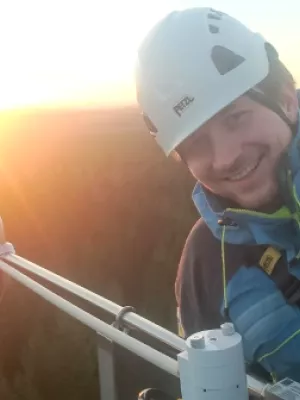
Michal Heliasz
Forskningsingenjör

Altered energy partitioning across terrestrial ecosystems in the European drought year 2018 : Energy partitioning in the drought 2018
Författare
Summary, in English
Drought and heat events, such as the 2018 European drought, interact with the exchange of energy between the land surface and the atmosphere, potentially affecting albedo, sensible and latent heat fluxes, as well as CO 2 exchange. Each of these quantities may aggravate or mitigate the drought, heat, their side effects on productivity, water scarcity and global warming. We used measurements of 56 eddy covariance sites across Europe to examine the response of fluxes to extreme drought prevailing most of the year 2018 and how the response differed across various ecosystem types (forests, grasslands, croplands and peatlands). Each component of the surface radiation and energy balance observed in 2018 was compared to available data per site during a reference period 2004-2017. Based on anomalies in precipitation and reference evapotranspiration, we classified 46 sites as drought affected. These received on average 9% more solar radiation and released 32% more sensible heat to the atmosphere compared to the mean of the reference period. In general, drought decreased net CO 2 uptake by 17.8%, but did not significantly change net evapotranspiration. The response of these fluxes differed characteristically between ecosystems; in particular, the general increase in the evaporative index was strongest in peatlands and weakest in croplands. This article is part of the theme issue 'Impacts of the 2018 severe drought and heatwave in Europe: from site to continental scale'.
Avdelning/ar
- Institutionen för naturgeografi och ekosystemvetenskap
- Centrum för miljö- och klimatvetenskap (CEC)
- ICOS Sweden
Publiceringsår
2020-10-26
Språk
Engelska
Publikation/Tidskrift/Serie
Philosophical Transactions of the Royal Society B: Biological Sciences
Volym
375
Issue
1810
Dokumenttyp
Artikel i tidskrift
Förlag
Royal Society Publishing
Ämne
- Physical Geography
Nyckelord
- eddy covariance
- energy balance
- evapotranspiration
- heat flux
- net carbon uptake
- water-use efficiency
Status
Published
ISBN/ISSN/Övrigt
- ISSN: 0962-8436